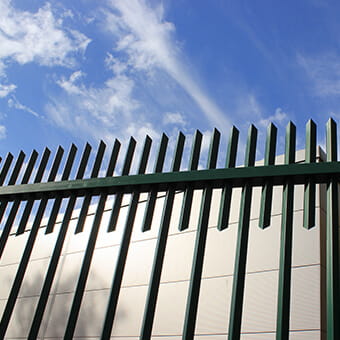Our other sites:
Project Overview
Client
Hospital
Location
UK
Date Complete
2024
Sector
Hospitals and Healthcare
Background
Following the 2020 pandemic and the surge in respiratory-related conditions, the demand on supplies of oxygen significantly increased. With oxygen cylinders being used more routinely in hospitals, guidance was updated on the safe use of oxygen supplies, with all healthcare organisations requested to carry out an urgent risk assessment of all acute clinical areas where gas cylinders are in use.
Oxygen became so crucial in the treatment of patients, that a few hospitals declared major incidents due to shortages. Without the essential resources, they couldn’t provide treatment and had to divert patients elsewhere. Since this, the government has invested over £15 million in upgrading oxygen supplies, ensuring that demands are met and care is not disrupted.
Some larger hospitals now have their own liquid oxygen storage facilities on site; vast industrial tankers kept externally, with facilities to convert it back to gas when required and piped directly to bedsides. These are industrial facilities that freeze air so that the oxygen and nitrogen separate and liquid oxygen is formed. Liquid oxygen – which takes up less space than the gas form – is then transported and stored in the tankers. Usually, cryogenic plants are owned and run by major gas companies, which charge hospitals a fee to deliver the oxygen, fill the tankers and maintain the equipment.
Challenges with storing oxygen and medical gases
The safe storage of liquid oxygen (LOX) prevents several challenges including the extremely low temperature and exact pressure it requires, the materials it reacts with, and the fire and explosion risks it presents. Because of this, it is essential that any supplies are secured, monitored, and managed carefully. Not only are the immediate safety risks high, but the knock-on effect of any incidents could cause a shortage and put patients’ lives in danger.
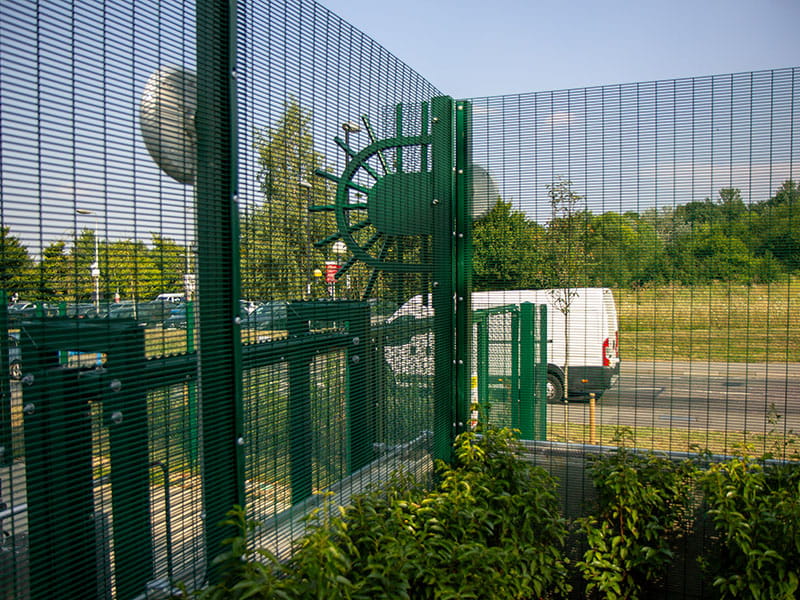
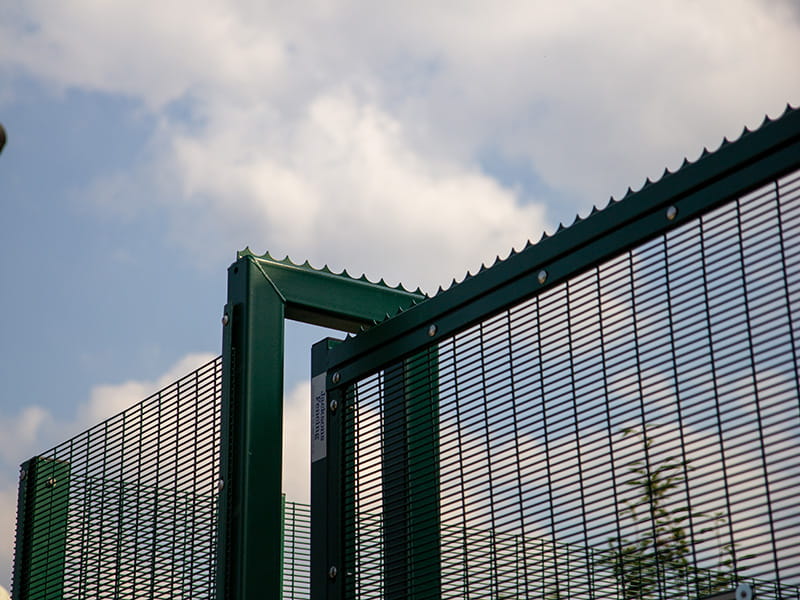
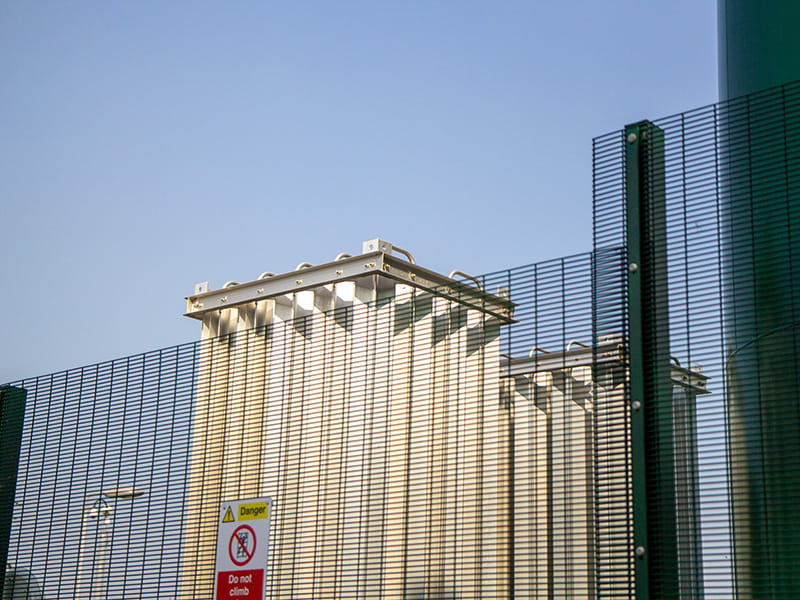
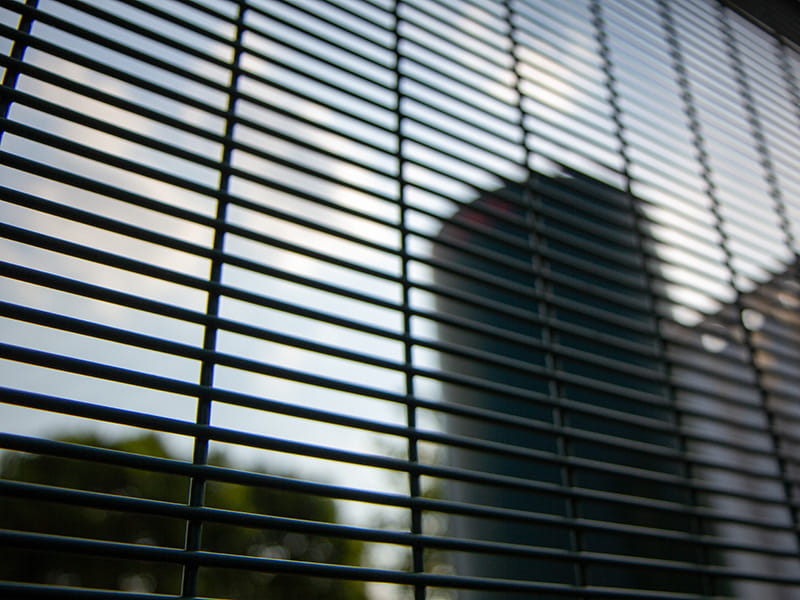

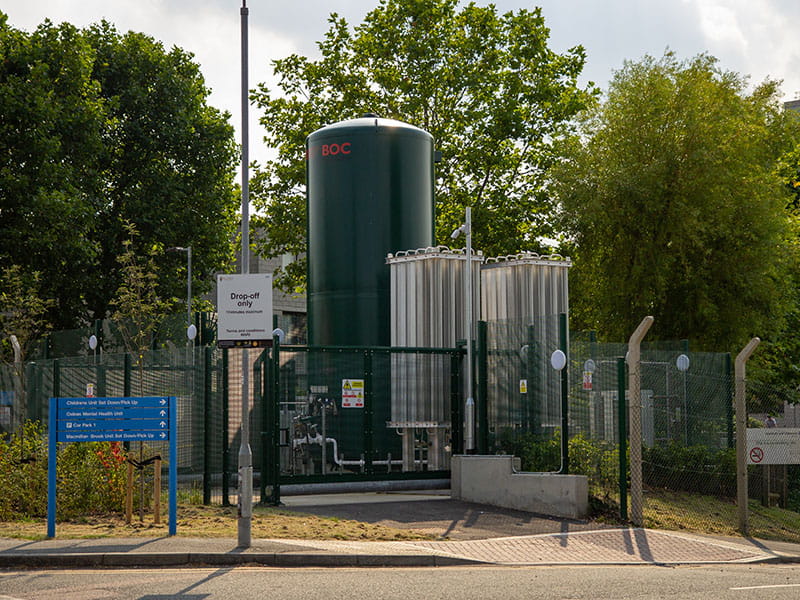
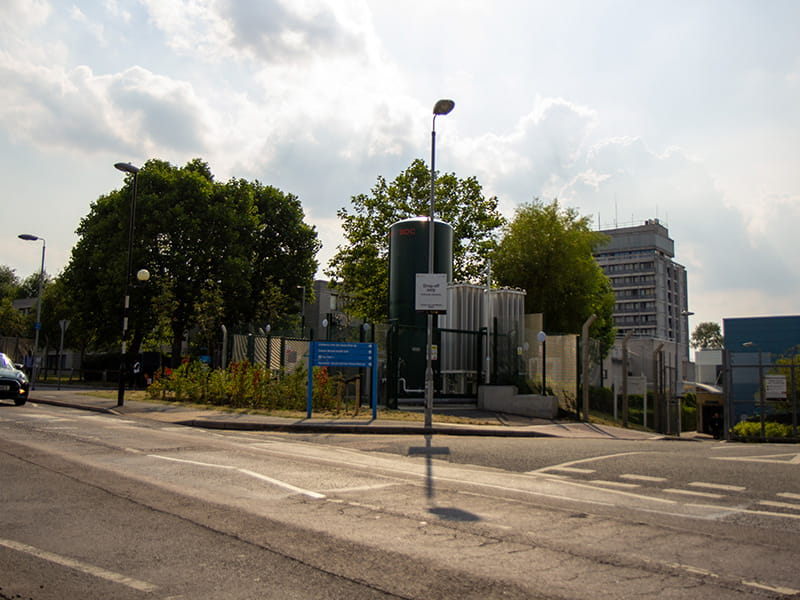
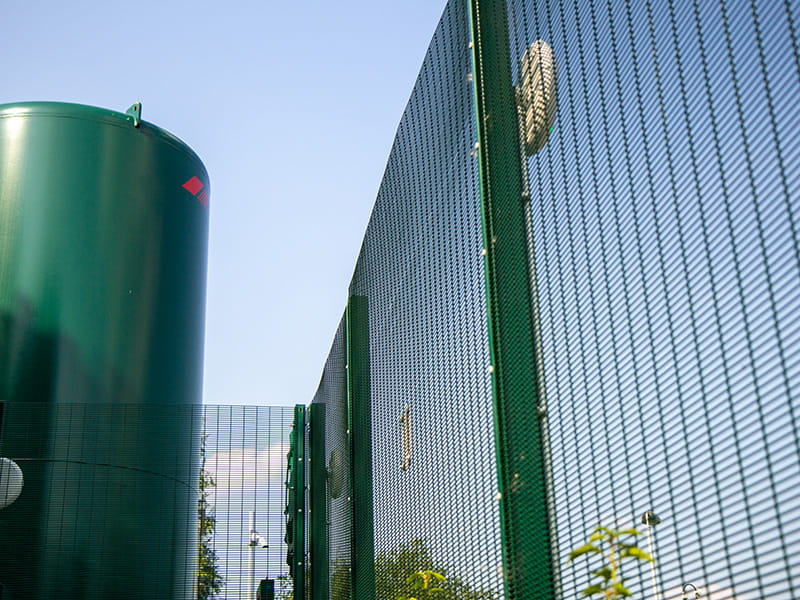

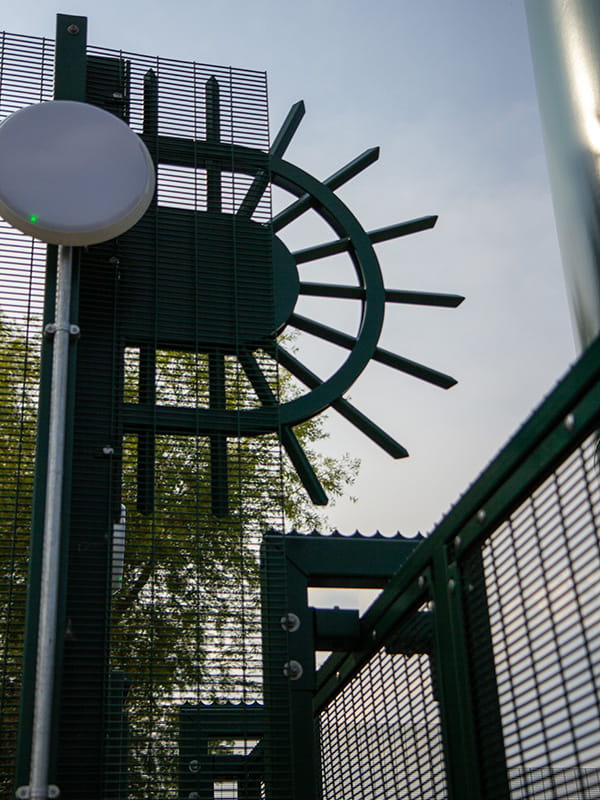
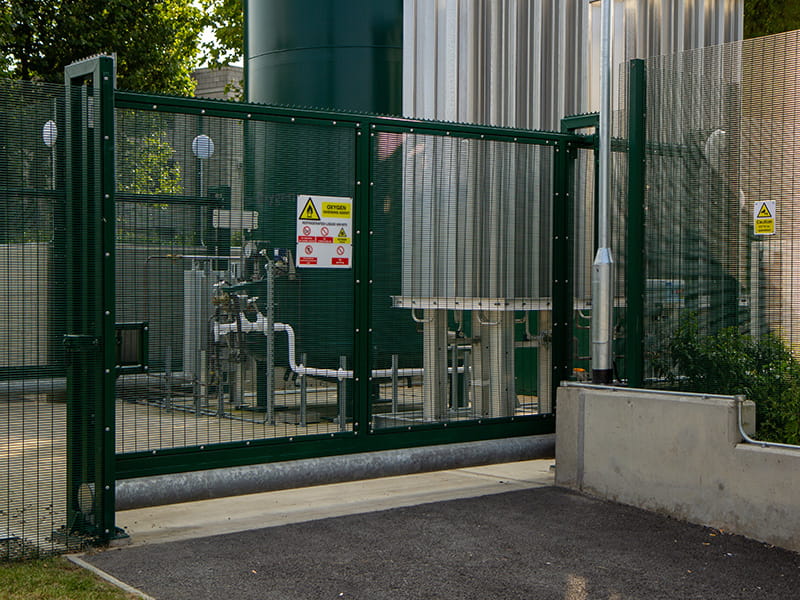
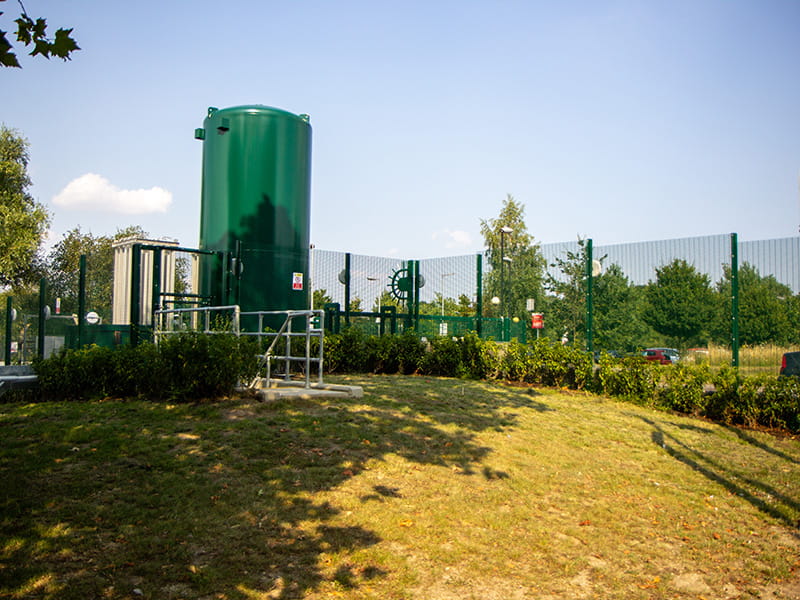
Solution
To provide security and controlled access for a new oxygen storage compound at a UK hospital, we supplied and installed our Securi-Mesh® mesh fencing system and gates. Installed at an overall height of 2.4m, 38 metres of fencing were installed onto concrete hardstanding. In addition, two cantilever sliding gates opening in opposite directions were installed, alongside a single leaf pedestrian gate with push pad exit and key entry.
358 mesh security fencing such as Securi-Mesh is ideal for industrial purposes for several reasons:
Why cantilever sliding security gates were used:
In addition, Jacksons’ Securi-Mesh and associated gates are guaranteed for 25 years against rust, providing a long-lasting solution that is needed particularly where underground pipes and services are present, to avoid disturbances. Choosing the option of a green polyester powder coating over a galvanised finish, the security fencing solution installed for this oxygen compound has extra corrosion resistance, minimal maintenance requirements, and delivers lower long-term costs for the hospital.
With varying heights being created by sections of fencing being installed on different levels, extra protection was needed against climbing. We installed a Barbican® vertical bar fan panel. Not only does this provide a barrier to intrusion, but also a visual deterrent.
Find out more about our hospital security fencing solutions, our 358 mesh fencing, and sliding gates.
Ready to find out more?
To discuss your requirements please call us or fill out the form below and someone from our sales team will be in contact with your quote shortly.
Request A QuoteRelated Products
Find related products for your order. If you cannot find the item you are looking for, please do not hesitate to call our friendly sales team.

Top


